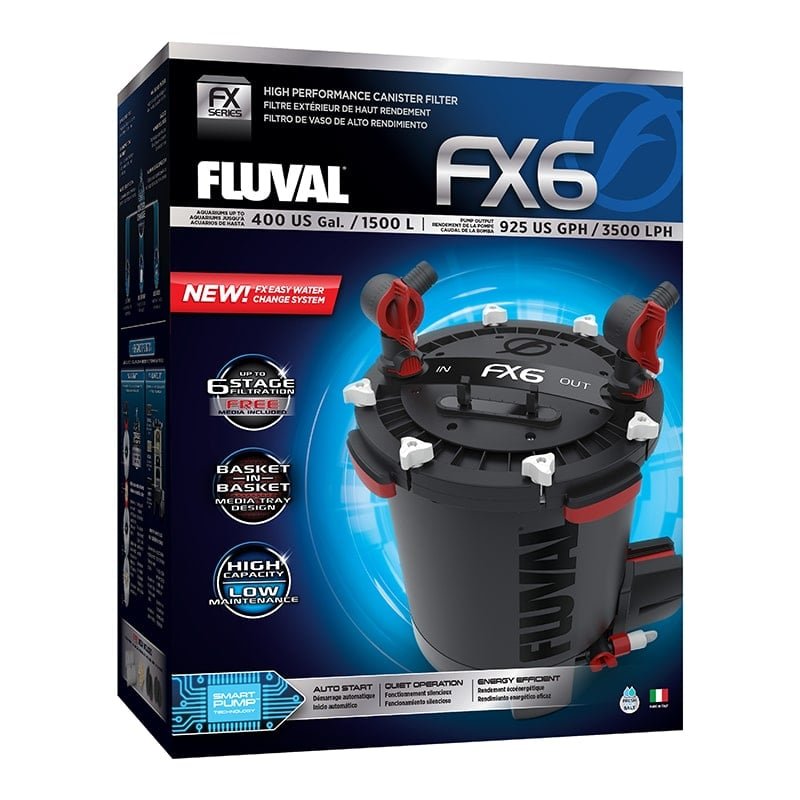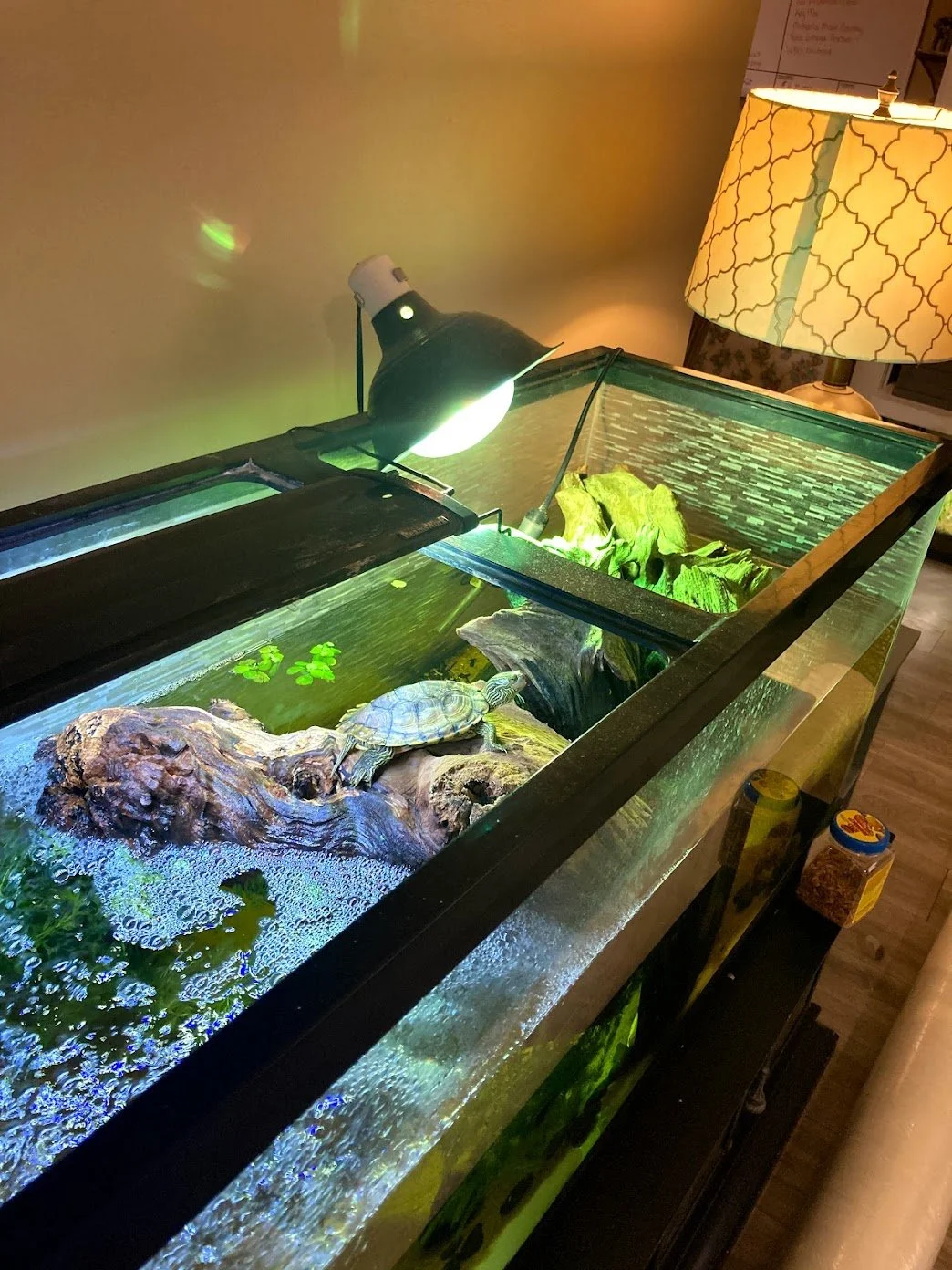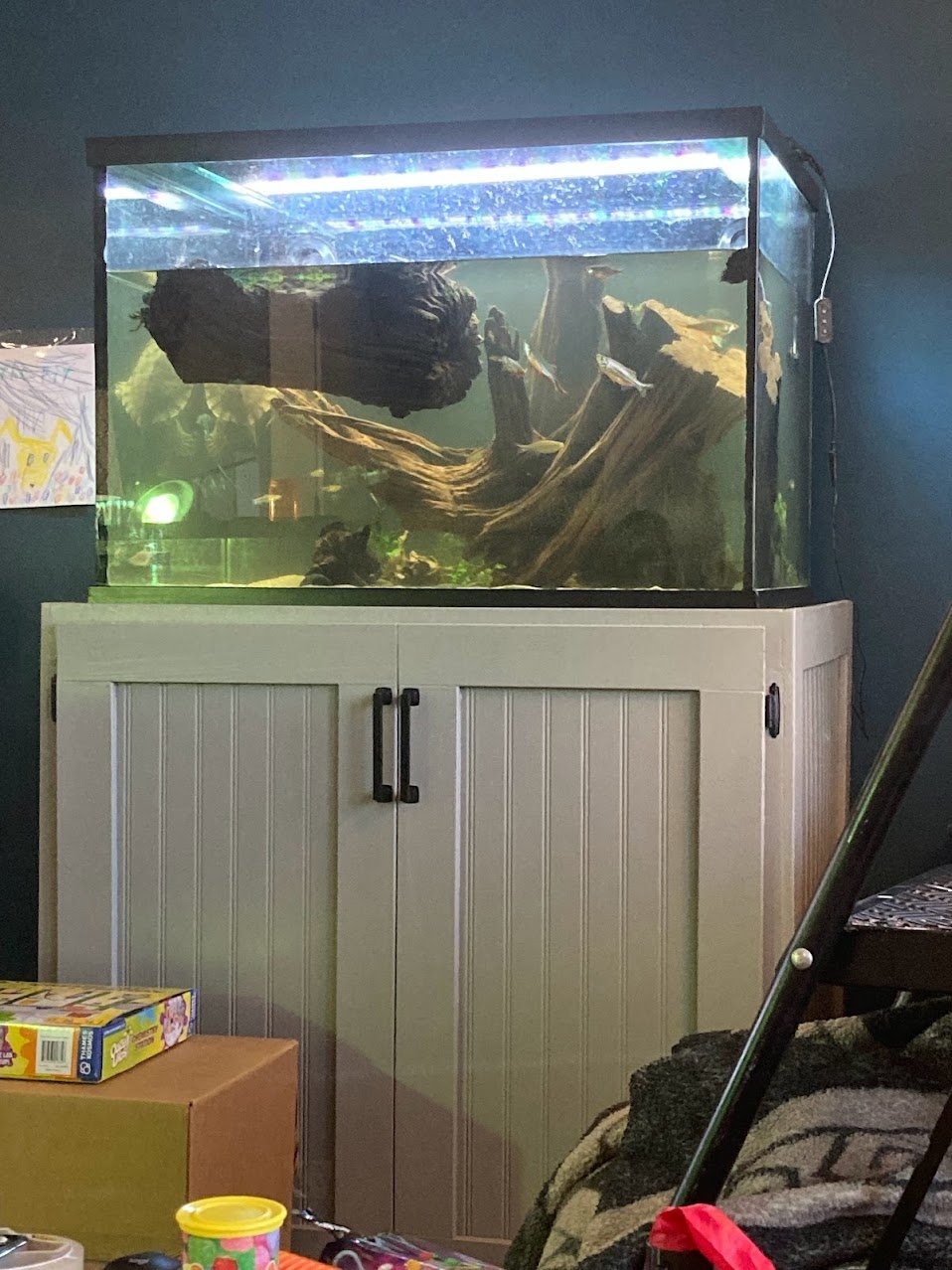Setting Up Your Aquatic Turtle Tank
Ah, aquatic turtles! These fascinating creatures have captured the hearts of many pet enthusiasts due to their unique personalities and charming looks. But, as any turtle aficionado will tell you, setting up a comfortable and healthy home for your shelled friend is crucial to ensuring they live their best life.
Setting up an aquatic turtle tank might seem like a daunting task at first, but fear not, dear reader! We're here to guide you through the process, share some personal anecdotes, and sprinkle in a bit of humor along the way. After all, who says learning about turtle habitats can't be fun?
In this article, we'll explore the ins and outs of creating the perfect aquatic turtle tank setup, covering everything from choosing the right tank and location to water filtration, heating, lighting, and decorations. By the end of our journey, you'll be fully equipped with the knowledge needed to provide your turtle with a cozy and healthy environment that they'll love to call home. So, without further ado, let's dive into the world of aquatic turtle tanks!
Choosing the Right Tank: Size Does Matter
Before we get our feet wet, let's talk about the most critical aspect of your turtle's new home - the tank itself. Choosing the right tank is essential for your turtle's happiness and well-being, and there are several factors to consider when making this decision.
Turtle Species and Size
Different species of aquatic turtles have distinct needs and preferences when it comes to their living quarters. For example, a small musk turtle requires less space than a large red-eared slider. Be sure to research the specific requirements of your turtle species before committing to a tank size.
Growth Potential
While your turtle might be small and adorable now, keep in mind that many turtles grow quite a bit over time. Be prepared to upgrade to a larger tank as your turtle grows to ensure they have ample space to swim, bask, and explore.
Number of Turtles
If you're planning on having more than one turtle buddy, make sure to account for the additional space each turtle will need. Overcrowding can lead to stress, aggression, and health issues, so be generous with your tank size calculations.
As a general rule of thumb, a 40-gallon tank is suitable for a single small to medium-sized turtle, while larger species or multiple turtles may require a 125-gallon tank or larger. Note that larger is always better - not only are the water parameters easier to maintain in a larger tank, but your new aquatic bff will be much happier with the additional room to explore.
Glass vs. Acrylic Tanks: The Great Debate
When it comes to choosing between a glass or acrylic tank, both options have their pros and cons. Glass tanks tend to be more affordable, scratch-resistant, and maintain their clarity over time. On the flip side, acrylic tanks are lighter, more durable (less likely to crack), and offer better insulation. Ultimately, the choice comes down to personal preference, budget, and the needs of your turtle.
Now that we've covered the basics of selecting the right tank, it's time to move on to the next step in our aquatic turtle tank setup adventure: finding the perfect location and getting everything set up!
Tank Location and Setup: Home Sweet Home
Now that you have the perfect tank in mind, it's time to find the ideal spot in your home to set up your turtle's new paradise. Here are some factors to consider when choosing the perfect location for your tank:
Temperature Considerations
Aquatic turtles require a stable environment with consistent temperatures. Avoid placing the tank near drafty windows, doors, or air vents that could cause fluctuations in temperature. It's also a good idea to keep the tank away from heat sources such as radiators or direct sunlight to prevent overheating.
Light Exposure
While natural light can be beneficial for your turtle, too much direct sunlight can cause excessive algae growth and make it difficult to maintain the proper water temperature. Find a location that provides indirect sunlight or use artificial lighting to simulate natural daylight.
Noise Levels
Turtles can be sensitive to noise, so it's best to place their tank in a relatively quiet area of your home. Avoid high-traffic areas or rooms with loud appliances that could stress your turtle.
Preparing the Tank: A Clean Slate
Before introducing your turtle to their new home, there are a few essential steps to follow:
Cleaning the Tank
Give the tank a thorough cleaning to remove any dust, dirt, or residues. Use a mixture of warm water and white vinegar to clean the glass or acrylic surfaces, and rinse well to ensure no traces of vinegar are left behind. Remember, never use harsh chemicals or detergents, as they can be harmful to your turtle.
Adding a Substrate
Substrate is the material used to line the bottom of your turtle tank. There are various options to choose from, including sand, gravel, and river rocks. Each has its pros and cons, so research which option is best suited for your turtle species. Once you've selected a substrate, rinse it thoroughly to remove any dust or debris before adding it to the tank.
Installing a Background
Adding a background to your turtle tank not only enhances its aesthetics but also provides your turtle with a sense of security. There are many options available, from natural-looking scenes to solid colors. Choose one that complements your turtle's personality and the overall look of your tank.
With the tank prepped and ready, it's time to dive into the world of water filtration, heating, and lighting – all essential elements for creating a healthy and comfortable environment for your aquatic turtle.
Water and Filtration: Crystal Clear Comfort
A clean and well-maintained aquatic environment is crucial for your turtle's health and happiness. In this section, we'll discuss the importance of water filtration and the different types of filters available to keep your turtle's home pristine.
A good general rule of thumb is that aquatic turtles need 4x the filtration as fish because they tend to be very messy if you’re feeding them within the tank. (If you remove them from their tank to feed them, that will reduce the amount of debris within their enclosure.) So, if you have a 100-gallon tank, then you should aim for a filter that is suited for up to 400 gallons.
And while Untamed at Home is not affiliated with any brand in particular, most individuals that I’ve spoken with prefer to go straight for the Fluval FX6 canister filter. Even if they start out smaller, they quickly upgrade because the FX6 is incredibly powerful and will keep your turtle happily swimming in crystal-clear water.
Aquatic turtles spend much of their lives in water, which means maintaining excellent water quality is essential. Poor water quality can lead to various health issues, such as skin and shell infections or respiratory problems. A reliable and efficient filtration system helps remove debris, harmful chemicals, and excess nutrients, ensuring a safe and healthy living space for your turtle.
There are several types of filters available for aquatic turtle tanks, each with its advantages and drawbacks. Here are the three main categories:
Canister filters: These external filters are known for their efficiency, high capacity, and quiet operation. Canister filters are suitable for larger tanks and can handle a significant bioload, making them an excellent choice for turtle habitats. However, they tend to be more expensive and require more maintenance than other filter types.
Internal filters: As the name suggests, internal filters are placed directly inside the tank. They are generally more affordable and easier to maintain than canister filters but may not be powerful enough for larger tanks or multiple turtles.
External filters: Also known as hang-on-back (HOB) filters, these devices attach to the outside of the tank and draw water through a tube. External filters are relatively easy to maintain and can be a good option for smaller tanks. However, they may not be suitable for larger setups or tanks with a heavy bioload.
Regular maintenance of your filter is essential to ensure its efficiency and prolong its lifespan. Follow the manufacturer's guidelines for cleaning and replacing filter media, and monitor the filter's performance to detect any signs of malfunction or reduced effectiveness.
With water filtration covered, we can now move on to another vital aspect of your turtle's environment – heating and lighting. Let's shed some light (and warmth) on this topic!
Heating and Lighting: Basking in Comfort
Proper heating and lighting are crucial for your aquatic turtle's health and well-being. In this section, we'll discuss the importance of maintaining the right temperature and lighting conditions, as well as the various heating and lighting devices available to help you create the perfect environment for your shelled friend.
Aquatic turtles are ectothermic, which means they rely on external heat sources to regulate their body temperature. Providing appropriate heating and lighting is essential for their digestion, immune system function, and overall health. Additionally, turtles need exposure to ultraviolet (UVA and UVB) light for proper shell development and calcium metabolism.
There are several options for heating your turtle's tank and choosing the right one depends on the size of your tank and the specific needs of your turtle species. Here are two popular choices:
Submersible heaters: These heaters are placed directly in the water and can be adjusted to maintain a consistent water temperature. They are ideal for small to medium-sized tanks and are typically easy to install and maintain.
Heat lamps: Heat lamps provide warmth by emitting infrared heat from above the tank. They are particularly useful for creating a basking spot for your turtle to warm up and dry off. Be sure to choose a lamp with the appropriate wattage for your tank size and keep it at a safe distance from the water to prevent burns or overheating.
Proper lighting is essential for your turtle's health, and there are two main types of lighting to consider:
UVB lights: These lights emit UVB rays, which are necessary for your turtle to synthesize vitamin D3 and absorb calcium properly. Without adequate UVB exposure, turtles can develop metabolic bone disease, a severe and potentially fatal condition. Be sure to select a UVB light specifically designed for reptiles and replace it according to the manufacturer's recommendations to ensure consistent UVB output.
Basking lights: Basking lights provide visible light and warmth for your turtle's basking area. They come in various wattages and styles, including incandescent, halogen, and compact fluorescent bulbs. Choose a basking light that suits your tank size and your turtle's heat requirements.
A basking area is a dry, warm spot where your turtle can climb out of the water to rest, warm up, and dry off. Create a basking platform using rocks, driftwood, or a commercially available turtle dock. Ensure the platform is stable and large enough to accommodate your turtle comfortably. Position the basking and UVB lights above the platform, maintaining appropriate temperatures and distances according to your turtle species' requirements.
With heating and lighting in place, let's move on to the finishing touches – decorations and hiding spots that will make your turtle's habitat feel like a true underwater oasis!
Decorations and Hiding Spots: Creating a Turtle Wonderland
Adding decorations and hiding spots to your turtle's tank not only enhances its visual appeal but also provides your shelled companion with mental stimulation, enrichment, and a sense of security. In this section, we'll explore the various decoration options available and discuss how to create hiding spots that your turtle will love.
Decorations serve several purposes in an aquatic turtle tank:
Provide visual barriers and hiding spots, reducing stress and aggression
Enhance the aesthetic appeal of the tank, making it a more enjoyable focal point in your home
Offer opportunities for exploration and mental stimulation, promoting natural behaviors
There's a wide variety of decorations available for aquatic turtle tanks, so you can get creative and design a unique environment that reflects your style and your turtle's personality. Here are some popular options:
Artificial plants: These low-maintenance decorations add color and texture to your turtle's tank while providing additional hiding spots. Choose plants made from non-toxic materials and ensure they are securely anchored to prevent your turtle from dislodging them.
Rocks and caves: Rocks and caves not only create natural-looking hiding spots but also offer surfaces for your turtle to climb and bask on. Be sure to choose smooth, non-porous rocks that won't scratch your turtle's shell or harbor harmful bacteria. Also, ensure the rocks are stable and won't topple over, potentially injuring your turtle.
Driftwood: Driftwood adds a touch of nature to your tank and provides additional basking platforms and hiding spots. Ensure the driftwood is clean, properly sanitized, and free from sharp edges before adding it to your tank.
Hiding spots are essential for your turtle's sense of security and well-being. You can create hiding spots in various ways, such as:
Placing rocks or caves in strategic locations throughout the tank
Positioning artificial plants to create visual barriers and secluded areas
Arranging driftwood pieces to form cozy nooks and crannies
Remember to strike a balance between providing ample hiding spots and maintaining open swimming areas for your turtle to enjoy.
Now that we've covered all the essential elements of creating a beautiful and functional aquatic turtle tank, let's wrap things up with some tips on maintaining your turtle's habitat in tip-top shape!
Tank Maintenance: Keeping Your Turtle's Home Shipshape
Proper tank maintenance is crucial for maintaining a healthy environment for your aquatic turtle. In this section, we'll discuss essential cleaning tasks and share some tips on keeping your turtle's habitat clean and comfortable.
Regular Water Changes
Performing regular water changes helps maintain good water quality by diluting harmful chemicals and removing debris. As a general guideline, change 25-50% of the water in your turtle's tank every 1-2 weeks, depending on your tank size, filtration system, and turtle population. Be sure to use a de-chlorinator to treat tap water before adding it to the tank, as chlorine can be harmful to turtles.
Cleaning the Substrate
The substrate in your turtle's tank can accumulate waste and debris over time, so it's essential to keep it clean. Use a gravel vacuum or siphon to remove debris from the substrate during water changes. If you're using sand as a substrate, gently stir it to release trapped waste before using the vacuum.
Cleaning the Tank Surfaces
Algae and mineral deposits can build up on the tank's glass or acrylic surfaces, reducing visibility and diminishing the tank's overall appearance. Use an algae scraper or a soft cloth to clean the tank's interior walls during water changes. For stubborn mineral deposits, a mixture of water and white vinegar can help dissolve them – just remember to rinse thoroughly afterward.
Filter Maintenance
As discussed earlier, regular filter maintenance is vital for ensuring optimal water quality and filtration efficiency. Follow the manufacturer's recommendations for cleaning and replacing filter media, and keep an eye out for any signs of reduced performance or malfunction.
Monitoring Water Parameters
Regularly testing your tank's water parameters, such as pH, ammonia, nitrite, and nitrate levels, can help you detect potential issues before they become major problems. Purchase a reliable water testing kit and follow the manufacturer's instructions to monitor your tank's water quality. Adjust your cleaning schedule or filtration system as needed to maintain ideal water conditions for your turtle species.
By following these maintenance tips and incorporating the knowledge you've gained throughout this article, you'll be well-equipped to provide your aquatic turtle with a happy, healthy, and comfortable home. So, go forth and create the ultimate turtle haven – your shelled friend will thank you for it!
Final Thoughts
Creating and maintaining a thriving aquatic turtle habitat is a rewarding and fulfilling endeavor. By considering all the essential elements – tank size and location, water filtration, heating and lighting, decorations, hiding spots, and a nutritious diet – you can provide your shelled friend with a comfortable and stimulating environment that supports their overall health and well-being.
Remember that ongoing research and learning about your turtle's specific needs and preferences are crucial for their long-term happiness. Don't hesitate to consult with reptile experts or veterinarians if you have questions or concerns about your turtle's care.
Embrace this exciting journey into the world of aquatic turtles, and enjoy the unique bond you'll develop with your fascinating and adorable companion. With your dedication and care, your turtle will thrive in their new, lovingly crafted haven – a true underwater oasis that you both can be proud of!









